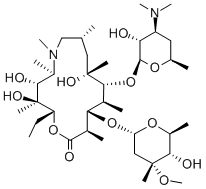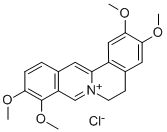PRODUCT Properties
| Melting point: | 205°C |
| storage temp. | under inert gas (nitrogen or Argon) at 2-8°C |
| solubility | Soluble in Chloroform,Dichloromethane,Ethyl Acetate,DMSO,Acetone,etc. |
| form | Powder |
| color | Yellow |
| LogP | -1.120 (est) |
| CAS DataBase Reference | 3486-67-7(CAS DataBase Reference) |
Description and Uses
This quaternary alkaloid occurs frequently in the Rhoeadales, being found in Cop tis japonica Mak. (Ranunculaceae); Berberis heteropoda Schrenk; B. vulgaris L. (Berberidaceae); Coscinium blumeatum Miers; Fibrauria chloroleuca Miers;Jatrorrhiza palmata (Lam.) Miers. (Menispermaceae); and Phellodendron amurense Rupr. (Rutcaeae). The base is usually obtained as the iodide dihydrate forming orange-yellow needles from H20, m.p. 241°C (dec.). Other salts that have been prepared include the chloride, green-yellow needles from H20, m.p. 205°C (dec.); nitrate, yellow needles, from H20, m.p. 239°C (dec.); perchlorate, m.p. 262°C (dec.); sulphate, m.p. 250°C; platinichloride, m.p. 236°C and the thiocyanate, m.p. 210°C (dec.). The alkaloid resembles berberine in yielding addition compounds with CHCl3 and Me2CO. On catalytic hydrogenation it gives tetrahydropalmatine, while on oxidation with alkaline KMn04 it furnishes corydaldine and hemipinic acid.





